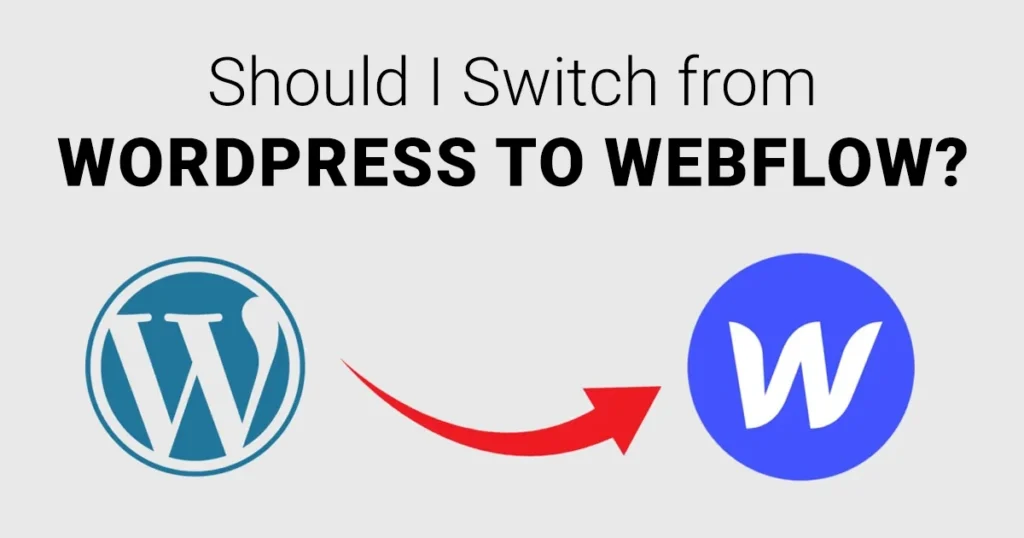For years, WordPress has been the unchallenged leader among CMSs—open source, customizable, and community-driven. But now, Webflow has sparked new debates. Will a design-first tool overthrow a legacy CMS?
More importantly, what will companies, developers, and digital marketers gain or lose from choosing one platform over the other?
A comprehensive breakdown of Webflow vs WordPress will delve into everything from SEO performance and pricing to professional adoption and potential downsides, allowing you to make an informed decision based on both data and industry trends.
Webflow vs WordPress: Overview
Over forty percent of the internet is run on WordPress, an open-source content management system.
Its adaptability, strong plugin service, and community are ideal due to Cyber erectile dysfunction by bloggers to companies and large organizations.
Webflow, conversely, is a visual site builder that allows you to control front-end design without a single line of complex code. It is a SaaS system that combines drag-and-drop simplicity with the flexibility of complex developer coding.
See also: Frontend vs Backend Development: Key Difference & What to Learn First
Webflow or WordPress? Which One Is Better when it comes to SEO?
In regard to SEO, both platforms include generated decent features but approach the whole thing in different ways.
WordPress SEO:
Very customizable via plugins such as Yoast SEO, Rank Math, or All in One SEO.
You can easily control meta descriptions, canonical tags, sitemaps, and schema markup.
The downside? Too many plugins can slow down the site, and some optimizations need a bit of technical knowledge.
Webflow SEO:
Inbuilt SEO features for meta tags, alt text, URL slug and sitemap.
Clean code and quick loading times go a long way toward contributing to the site’s technical SEO.
No bloating due to plugins.
Verdict:
In this SEO Webflow vs WordPress debate, Webflow takes the cake for code cleanliness and site performance, while WordPress offers more for someone who is a power user with control over anything and everything.
See also: Static vs Dynamic Websites: Which One is Right for Your Business?
Webflow or WordPress for Beginners?
WordPress introduced to New Users:
Very easy to implement initially through one-click installs.
There are thousands of themes, plugins, and tools, all free.
However, when working with these themes without being able to touch code directly, it often leaves non-tech users frustrated.
Updates and security issues management often remain manual or dependent on plugins.
Webflow new users:
Drag-and-drop interface, learning curve definitely steeper than traditional builders like Wix or Squarespace.
Has in-app tutorials plus a rich knowledge base.
More control once past the basic stages.
Summary:
If your experience is null, it seems that WordPress is forgiving at first, whereas it will provide a smooth-tapered, scaled experience once the underlying concepts are learned simply.
See also: Adaptive vs Responsive Design: Which Is Best for 2025?
Webflow vs WordPress Pricing: What’s the Cost?
WordPress Pricing:
This software can be used for free.
But, it will come with a cost to you as you will need to deal with a hosting fee, the purchase of a domain name, premium themes, and plugins, as well as an amateur developer now and then.
Costs vary from ₹5000 per year for a simple blog to over ₹50000 per year for a complex website.
Webflow Pricing:
It’s subscription-based pricing. Site plans begin around $14 per month (roughly ₹1,100).
Hosting is also included.
Additional costs could also include the CMS plans or the ecommerce capabilities.
| Platform | Cost for Basic Site | Hosting Included? |
| WordPress | ₹5,000–₹50,000/year | ❌ |
| Webflow | ₹12,000–₹25,000/year | ✅ |
If price is your primary concern and you’re sensible enough to go with a price-cutting option, WordPress, on the whole, offers pretty cheap upfront pricing. Webflow, on the other hand, is a bundled pricing solution where hosting is included, giving it a much more predictable pricing structure.
WordPress vs Webflow Performance
Page Speed & Hosting:
Webflow works at warp speeds, owing much of its efficiency to its integration with Amazon Web Services (AWS) with Fastly CDN.
It delivers the optimized code and does not produce an overload of plug-ins.
WordPress performance:
Depends on the hosting provider.
The number of plugins and scripts being executed.
If you have made any tweaks for optimizing images, using themes, and caching.
Verdict:
Webflow’s inherent CDN, hosting, and clean coding practices give it a clear advantage in performance over WordPress.
WordPress vs Webflow Pros and Cons
| Feature | WordPress | Webflow |
| SEO | Plugin-based, highly customizable | Built-in, efficient, minimal configuration |
| Performance | Variable – depends on setup | Fast by default |
| Ease of Use | Easy to start, complex to maintain | Intuitive for designers |
| Hosting | Separate and self-managed | Included and optimized |
| Maintenance | Required regularly | Minimal maintenance |
| Customizability | Extensive with plugins | High via design freedom |
| Plugin Ecosystem | 50,000+ plugins | Limited (uses integrations or custom code) |
| E-commerce Support | WooCommerce, fully scalable | Built-in but limited |
| Learning Curve | Low to medium | Medium to high (for non-designers) |
| Cost Over Time | Low to medium | Medium to high |
Should I Switch from WordPress to Webflow?

Should you want to escape plugin conflicts, continuous updating, or slow speed, it would be great to look at Webflow. It’s designed for anybody who values tight control over visuals by speed-modern UX, yet it’s dirtier and faster at packing higher output than much less maintenance.
If, on the other hand, you have a website that relies extensively on third-party integrations, deals with particularly complex e-commerce, or a lot of content, then WordPress is still a valuable proposition in terms of scale and flexibility that comes with a plugin ecosystem.
See also: Website Design Cost in India: A Comprehensive Guide
Do Professional Web Designers Use Webflow?
For sure, many pro web designers are choosing Webflow for:
Design-to-code workflow: This means designers are able to create production-ready websites without the intervention of developers.
Ease of client handoff: Clients can update content through the CMS – without messing with the design.
Portfolio sites, landing pages, and startups: The right use cases, as these require speed and visual control.
Design firms, freelancers, and even SaaS startups are using Webflow for its fast deployment and clean templating architecture.
Which Should You Choose?
It all boils down to nothing other than your objectives and technical understanding in the long run between Webflow and WordPress.
| Use Case | Recommendation |
| Blogging & Content Heavy Sites | WordPress |
| Speed & Design-first Sites | Webflow |
| Tight Budget | WordPress |
| No-code Visual Building | Webflow |
| Plugin-heavy Setup | WordPress |
And in case you are asking yourself, what should I use instead of WordPress, Webflow? Seek your areas of pain. Are you bogging yourself down with the plugins?
Is it an absolute nightmare to handle security issues? In that case, Webflow may be the unwitting upgrade you have been needing.
But if you want flexibility, thousands of integrations, or just love the open-sourcing of WordPress, there is no reason to leave just yet.
FAQ’s
You can switch if you want to have complete control over your design without being tied to a template and third-party plugins. The design freedom is much larger with Webflow, with less maintenance overhead, but you lose many of the WordPress plugins and their ease of blogging. Depends on the project type and level of technical comfort.
Both are friendly to SEO, WordPress scoring; however, if you use plugins such as Yoast or Rank Math. As clean, lean code and SEO capabilities such as meta tags, alt text, and custom slugs have been built into Webflow, an aspect that appeals to the tech-savvy interface who would avoid having to play with too much bloat.
Webflow can be a little tricky if you come from a templated platform, and it lacks a robust ecosystem of plugins. Pricing is also pretty high, given that you include hosting and CMS features. Limitations in dynamic content compared with WordPress, and fewer third-party applications are the disadvantages, especially for complex projects.
Definitely; a lot of professional designers are using Webflow because of its visual development, custom animation tools, and no-code/low-code capabilities. This software is widely adopted a lot by agencies and freelancers building the responsive, pixel-perfect sites. However, WordPress is still popular when talking about content-heavy, blog-driven websites or plugin-heavy, heavily divided sites.
Webflow operates under a transparent pricing model that is premium. It starts from around $14/month for basic sites and goes up to $39+/month for CMS or business use. WordPress is free of charge, yet, it comes along with hosting expenses and premium themes and plug-ins. As the years go enforced, Word Lap takes the cake until you need too many add-ons.
It depends-the beginner. Webflow can be quite intuitive after some practice, if you happen to be visual and like drag-and-drop styling with live shows. WordPress is easier for absolute beginners who want to get a site online as quickly as possible with ready-made themes and pre-made plugins without having to deal with layout logic or structure.





